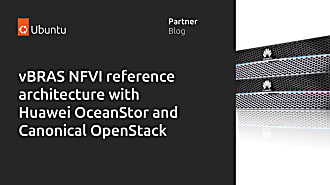Canonical
on 26 April 2013
The past couple of years have seen a fundamental shift in the way enterprise IT is done. This trend started with the consumerisation of corporate devices, and the gradual introduction of BYOD policies. This has paved the way to the “user voice” being heard more than ever. We’re seeing this trend continuing into the backend of corporate IT, from the infrastructure services to the enterprise applications. Business users are slowly demanding tools and environments that will enable them to do their jobs better, they are no longer satisfied with using whatever IT mandates. This applies just as much to enterprise applications as it does to mobile devices.
There is clearly a need for easier access to new enterprise applications, enabling users and companies to try them, and make an educated choice based on experience rather than a sales pitch. Companies can no longer afford the long wait times that normally come with procurement cycles, nor do they want the narrow options they provide.
On the other end of the spectrum, IT service providers are becoming more sophisticated about the way they offer their services. Many telcos and service providers have recognised the value of offering public cloud services, and most of them already have clouds up and running. As they become more experienced cloud providers, they realise the importance of diversifying their vendor base to avoid lock-in, as well as looking for lower-cost options that will still give them access to the latest features and enterprise-grade support. Telcos and service providers have strict SLAs that they are looking to meet. They don’t take the decision to offer cloud services lightly, and are looking for the right partners to help them achieve their standards for security, reliability, and uptime. The sophistication also extends to looking at the building blocks of their cloud infrastructure. So, instead of looking for “cloud infrastructure”, they are now looking at optimising the different aspects of that infrastructure in a service-driven manner.
We are seeing three main areas in which this shift is taking place: compute, storage, and networking. OpenStack continues to gain traction as the best platform on which to build cloud infrastructure, but customers aren’t always satisfied with the default options that come with OpenStack. They want more choices that suit their businesses, and they want to be able to switch with minimum hassle.
At Canonical, we believe we stand at the intersection of those two trend lines, with Ubuntu 13.04 and paving the way to 14.04 LTS. The move towards more user-driven technology choices fosters the message at the core of open-source software, namely to drive adoption among end-users and slowly expand that to the rest of the enterprise. We’ve seen this happen with technologies like Gmail, Gdocs, Skype, and others, which have moved from mainstream use to being legitimate enterprise applications. We believe that open-source will be the next step of that trend. The increasing ease with which tools like Juju can be used to deploy and manage cloud-based services provides a strong foundation on which to build on-demand, fast-paced enterprise offerings. It transforms the way enterprise applications are created, distributed, sold, used, and billed, and opens up the way not only for smarter IT choices for companies, but to a whole host of application providers that couldn’t access the enterprise market before.
On the cloud infrastructure side, the expansion of our ecosystem plays well into the diversification we see in technology choices along the cloud stack. Ubuntu now works seamlessly with various products such as Ceph for storage, Floodlight for SDN, and the Canonical-VMWare collaboration links OpenStack compute (Nova) to the ESX hypervisor. Offering a ‘High Availability’ deployment configuration for core OpenStack components such as RabbitMQ and MySQL helps meet service provider requirements for maximum uptime and reliability. We expect this to be extended to other Juju charms in the near future, offering a complete HA environment for cloud infrastructure.



